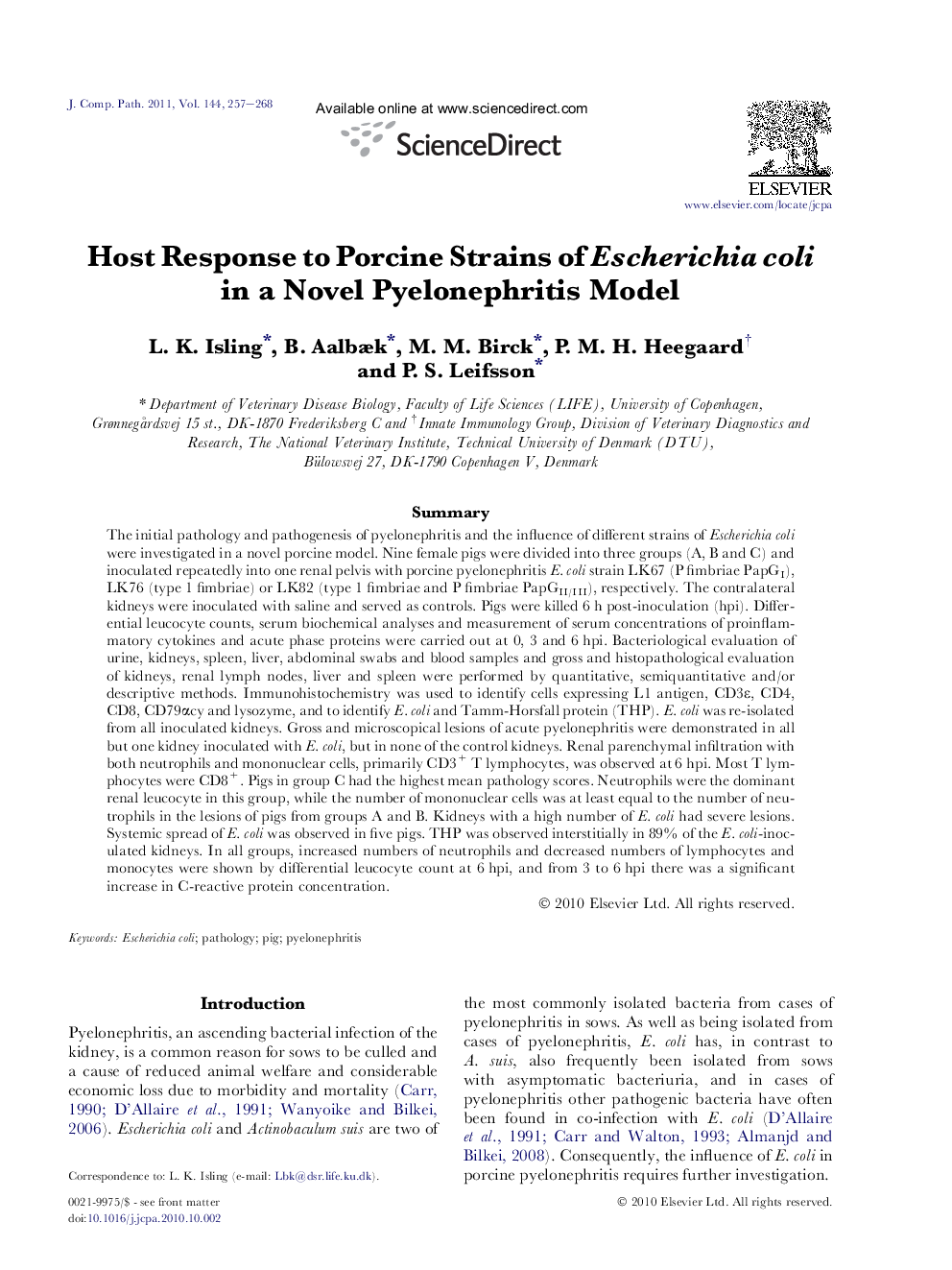| Article ID | Journal | Published Year | Pages | File Type |
|---|---|---|---|---|
| 2438269 | Journal of Comparative Pathology | 2011 | 12 Pages |
Abstract
The initial pathology and pathogenesis of pyelonephritis and the influence of different strains of Escherichia coli were investigated in a novel porcine model. Nine female pigs were divided into three groups (A, B and C) and inoculated repeatedly into one renal pelvis with porcine pyelonephritis E. coli strain LK67 (P fimbriae PapGI), LK76 (type 1 fimbriae) or LK82 (type 1 fimbriae and P fimbriae PapGII/III), respectively. The contralateral kidneys were inoculated with saline and served as controls. Pigs were killed 6 h post-inoculation (hpi). Differential leucocyte counts, serum biochemical analyses and measurement of serum concentrations of proinflammatory cytokines and acute phase proteins were carried out at 0, 3 and 6 hpi. Bacteriological evaluation of urine, kidneys, spleen, liver, abdominal swabs and blood samples and gross and histopathological evaluation of kidneys, renal lymph nodes, liver and spleen were performed by quantitative, semiquantitative and/or descriptive methods. Immunohistochemistry was used to identify cells expressing L1 antigen, CD3É, CD4, CD8, CD79αcy and lysozyme, and to identify E. coli and Tamm-Horsfall protein (THP). E. coli was re-isolated from all inoculated kidneys. Gross and microscopical lesions of acute pyelonephritis were demonstrated in all but one kidney inoculated with E. coli, but in none of the control kidneys. Renal parenchymal infiltration with both neutrophils and mononuclear cells, primarily CD3+ T lymphocytes, was observed at 6 hpi. Most T lymphocytes were CD8+. Pigs in group C had the highest mean pathology scores. Neutrophils were the dominant renal leucocyte in this group, while the number of mononuclear cells was at least equal to the number of neutrophils in the lesions of pigs from groups A and B. Kidneys with a high number of E. coli had severe lesions. Systemic spread of E. coli was observed in five pigs. THP was observed interstitially in 89% of the E. coli-inoculated kidneys. In all groups, increased numbers of neutrophils and decreased numbers of lymphocytes and monocytes were shown by differential leucocyte count at 6 hpi, and from 3 to 6 hpi there was a significant increase in C-reactive protein concentration.
Related Topics
Life Sciences
Agricultural and Biological Sciences
Animal Science and Zoology
Authors
L.K. Isling, B. Aalbæk, M.M. Birck, P.M.H. Heegaard, P.S. Leifsson,
